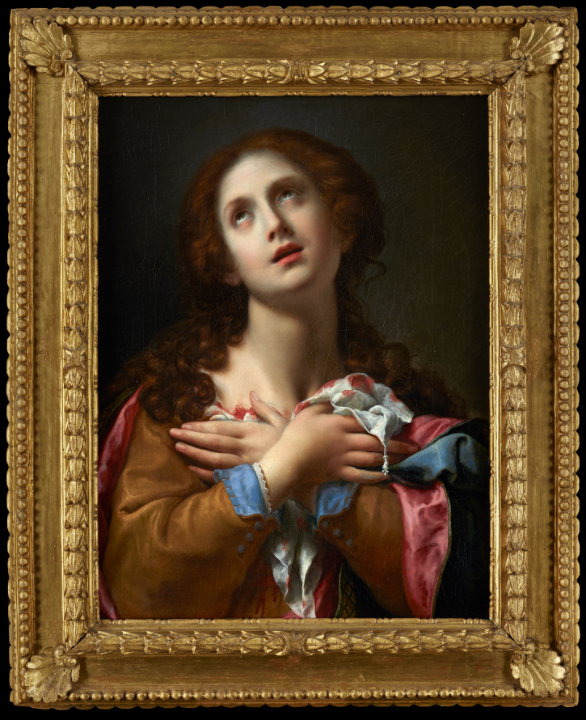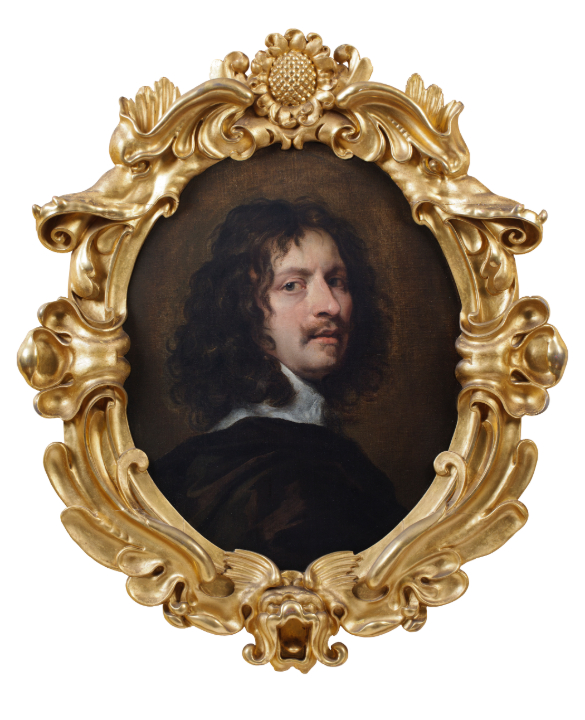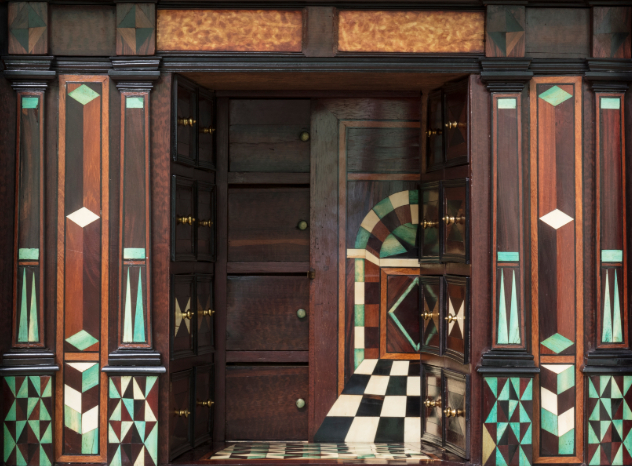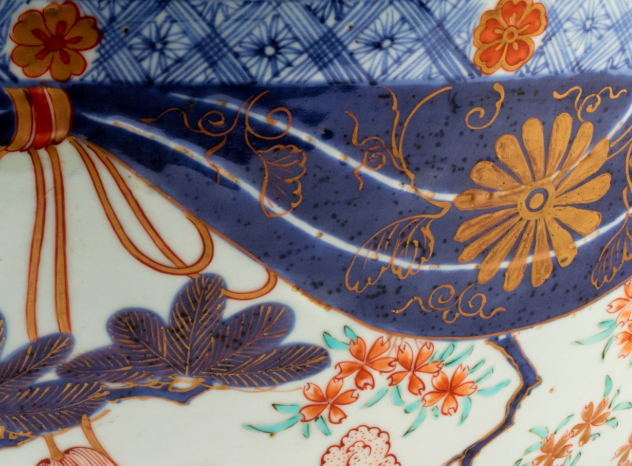Of all the treasures on which the Child family spent their fortune, it was their paintings that they valued most – and wished to share.
Sir Robert Child was the art-lover of the family. He befriended artists and travelled through Europe buying spectacular paintings. These works of art filled his townhouse in Lincoln’s Inn Fields, just around the corner from the Fleet Street bank. He seems to have made his pictures unusually accessible to fellow art-lovers. In 1707 the critic Bainbrigg Buckeridge wrote that the collections of the ‘English Nobility and Gentry’ were locked behind closed doors, but Sir Robert’s was created ‘as much for the publick Instruction, as for private Satisfaction’.
These pictures became the basis for Osterley’s famous art collection, a large part of which was destroyed in a terrible fire in the 20th century. Saint Agatha by Carlo Dolci is one of the small number of Robert’s paintings that escaped this fate, having been sold before the disaster.
Saint Agatha was bought at auction by the National Trust in 2018 with the help of Art Fund and other generous public donations. Fifty years after the Childs’ descendants gave Osterley to the nation, the picture returned to permanent public view – a beautiful and profound fragment of what has been lost.
Devotion
The Italian artist Carlo Dolci was affectionately known as Carlino (‘little Carlo’) by his admirers because of his modest personality. Yet his talent caused his fame to spread across Europe.
Dolci grew up in the devoutly Catholic culture of 17th-century Florence and at a young age devoted his art to God. Most of his works were made for the private spiritual meditation of his patrons and depict passionate religious subjects.
His paintings mix ideal perfection with intensely-observed reality. Their highly polished finish is achieved with barely visible brushstrokes. This attention to detail had a real spiritual meaning according to Dolci’s friend and biographer Filippo Baldinucci. He wrote, ‘Should you wish to see Carlino’s conscience – delicate, accurate, and diligent as it was – you need only observe the works from his brush.'
Agatha's story
Agatha was a Christian who lived on the Italian island of Sicily in the 3rd century AD. This was a time of religious intolerance when the Roman Empire violently persecuted the followers of Christianity. According to early Christian texts, the governor of Sicily fell in love with Agatha and repeatedly asked her to marry him. Having already devoted her virginity to God, she refused.
Enraged, the governor had her arrested using the excuse of her Christianity. She was then imprisoned and tortured, including being raped and having her breasts excised. All the while she refused to give up her faith. As she waited for her execution, a heavenly vision of Saint Peter appeared to her in her cell to comfort her and miraculously heal her wounds.
To this day, Agatha is remembered as a Christian hero in the Church of England each year on the 5th of February. For Catholics, her story has made her a martyr-saint to whom victims and survivors of sexual assault, and people with breast cancer, can turn in prayer.
Salvation
Agatha was imprisoned and tortured by the Romans in 3rd-century Sicily for her outlawed Christian faith. This included having her breasts excised, as revealed by the blood that stains the white cloth at her chest.
Dolci paints Agatha in the moment when a heavenly vision of St Peter appears in her cell to heal her wounds. He carefully describes her shining eyes, where tears of anguish mingle with tears of joy. The hands that sought to staunch her wounds now rest, one upon the other, in reverence for the vision of grace unfolding above her.
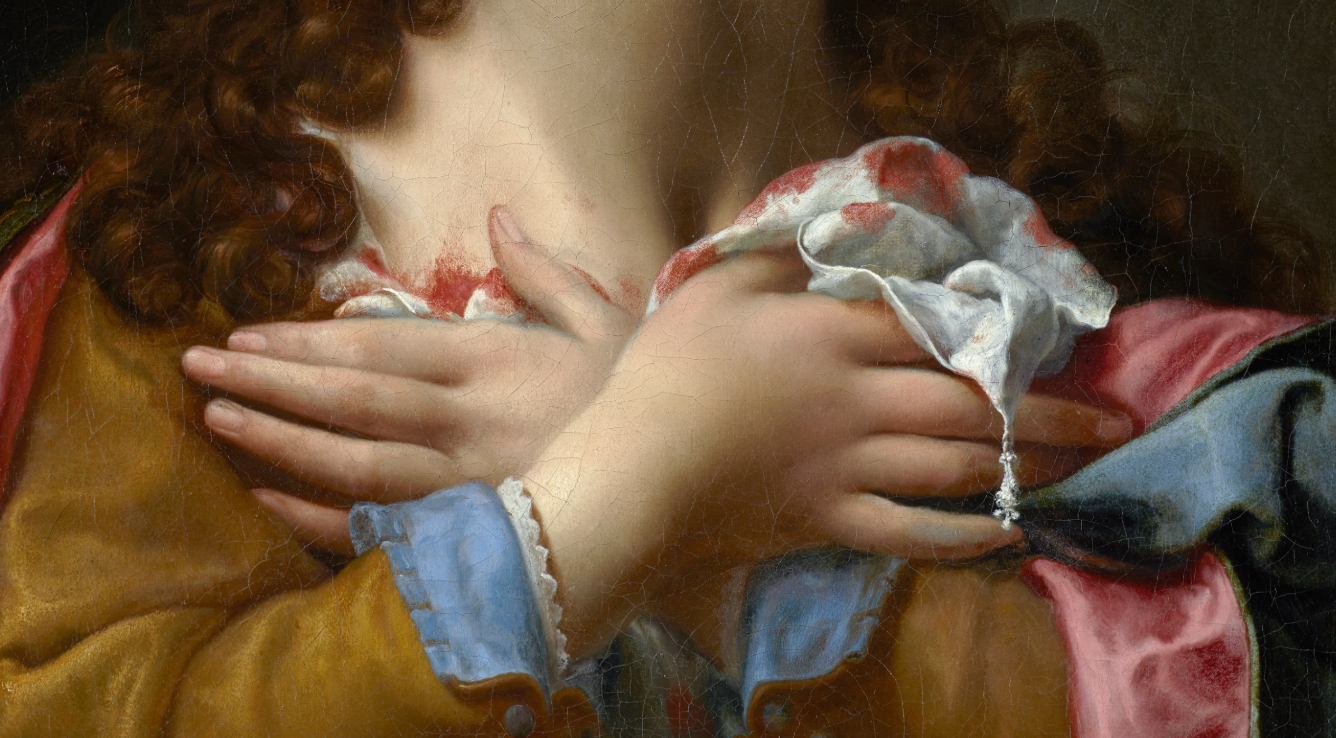
Saint Agatha is shown in the moment between suffering and salvation
This profound work of art hung in the Dining Room of Robert Child’s house in Lincoln’s Inn Fields before it was moved to Osterley. It was shown alongside many other 17th-century Italian works, often on religious themes, for which Robert appears to have had a passion.
Self-reflection
This is a self-portrait by the English artist, William Dobson, who was the official portraitist of King Charles I during the Civil War. It was painted towards the end of Dobson’s short life when the declining fortunes of his patron had left his career in ruins. The artist has painted himself with vigourous and fresh brushstrokes but looks out from the shadows with an ambiguous expression.
This picture entered Robert Child’s collection in the early 18th century. By that time, Dobson was celebrated as the ‘most excellent painter that England had yet bred’. It hung in his house in Lincoln’s Inn Fields alongside self-portraits by other past-masters of English portraiture, Sir Anthony van Dyck and Sir Peter Lely. Robert welcomed aspiring English artists into his collection, so these portraits may have provided inspiration.
Loss
The fire which destroyed much of the Childs’ world-class pictures collection in 1949 took place on the island of Jersey. They were being stored there by the 9th Earl of Jersey, Sir Francis Child the Elder’s great-great-great-great-great-great grandson, who had inherited Osterley.
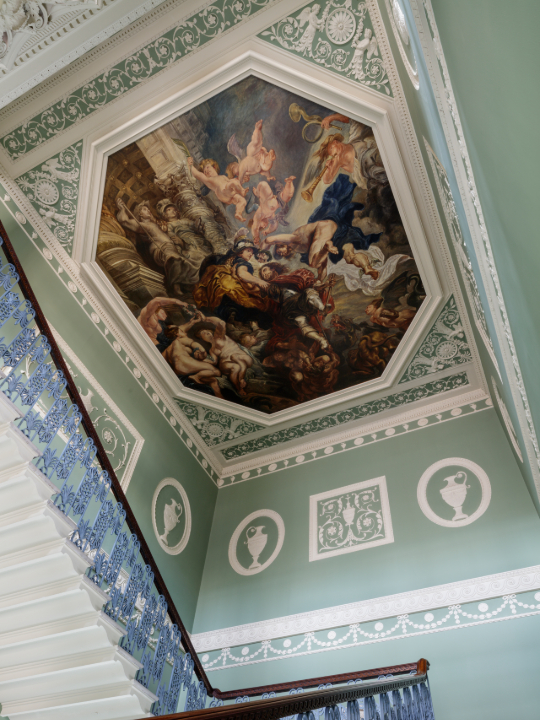
Ceiling painting in Osterley's Great Stair, a 20th-century copy of The Glorification of the Duke of Buckingham by Rubens
Among the destroyed pictures was Sir Robert’s prized ceiling-painting by Sir Peter Paul Rubens. On the Grand Staircase at Osterley, there is a 20th-century painted reproduction in the place of the original. The National Trust is always seeking the few paintings from Osterley's once-great pictures collection that, like Dolci's Saint Agatha, avoided destruction. It hopes that more of these treasures can be returned to their home with the help of our supporters.
